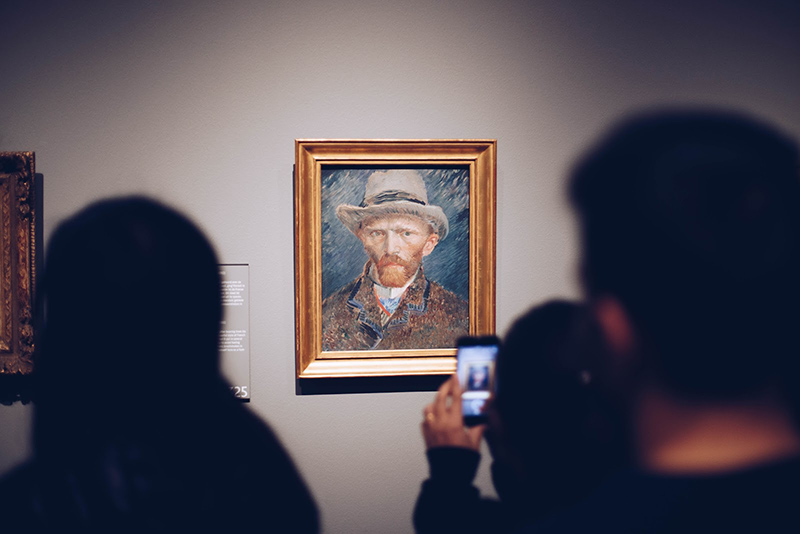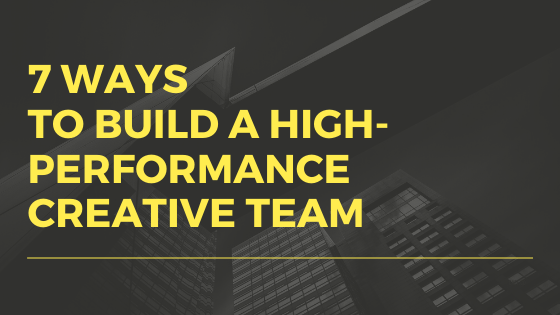Hey-ho, my friends!
Slurping hot steamy coffee and listening to the old good Blitzkrieg Bop by Ramones playing in my headphones (wow, a rhyme!), I somehow decided I wanted to share with you more insights on teamwork.
Frankly, the topic is so wide you could go on and on with it, but since article writers are supposed to pick a more specific title, I’ve chosen to turn my mind to the process of creating high-performance creative teams.
Creatives quite often happen to be weird people who possess flamboyant individual traits of character. Everybody’s willing to be different, find their own voice, and show what they are capable of. It is gorgeous and actually is the reason why I love the industry so much. The world of design is so competitive and unique, and there’s something new every day – ideas, names, stories of success and failures. On the other hand, such diversity might become a big issue: how to make a couple of bright minds get under one roof and work as a team? Not an easy task, but definitely not impossible.
Table of contents:
Why Build a High-Performance Creative Team?
It’s one thing to improve the existing team and polish everything until it shines. If you’ve been working together with your partners for some time, you know what you are capable of, you can cover each other’s blind spots and emphasize the strengths. But building high-performance teams from scratch is a completely different story – you never know how it might turn out in the end even if you know the people you intend to work with well enough.
Developing high-performance teams is an important part of your working process, and you have to consider many things before actually taking on some projects. New companies and agencies usually have an extraordinary amount of drive and desire to make every design their own, but their hopes might crash very fast if they do not dedicate enough time to grind their inner balance. The results can vary significantly: you may get lucky in the very end and catch your fortune’s tail, but it’s a big rarity. Usually, reality hits hard and gives us such unpleasant examples of team malfunction as heated arguments, misunderstandings, and even burnouts.
There are many smart methods of how to build a high-performing team to avoid creative tension, and I’ve tried to choose the very ones that helped me personally and many of my colleagues. We’ve decided that it’s a good idea to go from the easiest to the hardest ones and make our path more or less chronological, so brace yourselves for a ride!
7 Ways to Build a High-Performance Creative Team
№1: Find your best people

When you are at the very beginning of your way to build high-performance creative teams, your first main task is to find people you want to work with. They might be basically anyone – old classmates who went into the same industry as you, someone’s acquaintances, or even complete strangers who responded to your “WANTED!” ad on the Internet. There are several main points I would stick to, though:
- You must be comfortable working with them. And by working I do not mean only coming up with creative ideas and saying how cool they are. Some ideas are good, some are bad, and you have to be absolutely comfortable discussing and criticizing them. It does not come at once, but if you don’t feel like killing your new colleague for their first remarks to your work and vice versa, it’s a good sign of mutual respect.
- Your partners must have a certain proficiency level. It is totally up to you to decide how cool the qualifications must be considering your field of work, initial budget, estimated team size, etc. The main point is to be sure that your workers are professional enough to fit into the niche you want them to fit. If you are not sure about that, I would suggest thinking twice before launching any kind of team at all.
№2: Set up a proper workflow

After you’re done with recruiting, what you need is to create a proper workflow for every different type of project you intend to work with. All employees should know the order in which the mock-up travels from one person to another for edits and approvals. Everybody should have their own functions assigned to them from the very beginning based on their strengths and weaknesses.
The stable workflow will protect you from hearing something like “I did not know what to do with this” and “I was not sure I was a part of this project”. Naturally, before any project launches, you have to go through all the managing steps with your team once again just to remind everyone how the whole thing works. But having some templates prepared beforehand has always proved beneficial since it saves a significant amount of time.
№3: Use special software

After you’re done with the workflow, choosing the software you’re going to work with is the second thing that is supposed to make your life easier. Considering your workflow steps, you have to think about what you can automate and then find something that could help you do that. Apart from standard designer tools like PS, InDesign, Illustrator, or whatever else you might be using, I would suggest considering some project management or design review tools.
The scheme is simple: instead of emailing all the tasks and mock-ups or sending them via messengers, you can do it in a special program. Apart from tasks assignment, review tools allow you to annotate in the areas you would like to change and invite the customer to check the asset. After the necessary changes are applied, you can compare different versions to see what exactly was changed; it speeds up the whole process significantly. Some review tools have auditing functions and are able to show you the whole project’s history.
If you ask me which one to use, I, for sure, would recommend Approval Studio. It has all the necessary functionality and is very easy to navigate.
№4: Be open-minded

With the set and automated workflow, you are ready to wrestle with some complex projects! Congrats, it’s a significant step forward in your team-building process. Although there’s one serious point you have to consider: you have to be as open-minded as possible. First projects together mean first disagreements about whose idea fits into the general concept better. As I’ve mentioned at the beginning of the article, new teams often have a great deal of drive which might play a bad trick on them, sparking unproductive conflicts between team members and undermining the group dynamics.
You can avoid that if you have more experienced employees, but anyway you’ll have to learn to accept the opinions of others and be objective about what’s good and what’s not. Your work is not about the personalities, it’s about the best result that would benefit the project in the first place. Logically, if it improves the final version, the whole team wins this way or the other. A small inner competition is a sort of necessary, but you should not become overprotective of the ideas just because they are yours or your best buddy’s. I may sound like I’m preaching or something, but you gotta learn to let go and accept new ideas.
№5: Learn together constantly

Opening your mind for your colleagues’ ideas is only the beginning. One more thing you must never forget is that you should never stop learning. Expanding your knowledge borders on your own is one thing, but if you’re a part of the team, you must share. Found some interesting statistic or insight? Send it to your team’s chat. Thinking of getting enrolled in a brand-new training course for creatives? Suggest your teammates attending it together.
Your team members should grow simultaneously both as individuals and as a great team to enhance creative performance. The better your personal skills are, the more your company benefits from them. The more proficient the whole squad is, the better the result, reputation, and further projects’ quality is. Cultivate constant learning and never pretend you know everything for it is absolutely impossible. Especially in the sphere that is so chaotic and changes so rapidly as design.
№6: Develop high-performing teams’ chemistry

Some things come only as your team progresses together as a single unity. Your ability to collaborate with each other will increase quickly enough provided you have been following all the previous steps all along. Long story short, it means better ideas and solutions to the clients’ business problems. Your mutual understanding is very important to proceed with projects fast and without any quality loss. This trait is crucial for any creative agency: if you can deliver quality work within the shortest deadline, you’re in the win-win zone.
That being said, improving chemistry does not mean work or team performance exclusively. There are many methods to work out your cooperation skills like doing sports, quests, or even simply hanging out together. The better you understand your colleagues, the stronger your performance as a team will be. And, besides all the practical perks, your work will be much more fun if you manage to develop an easy-going and friendly atmosphere as well as strong relationships. It all depends on you.
№7: Gain your creative individuality

Let me explain it like this: when you see The Last Supper – you know it is da Vinci, when you read The Song of Ice and Fire – you have no doubt it’s George Martin, when you listen to Babe, I’m Gonna Leave You – you’re totally sure it’s Led Zeppelin, and when you see a man without an ear – it’s 100% Vincent van Gogh. They all have their own characteristics and traits that make them stand out among all others, something that makes them unique and recognizable. One of your ultimate goals is to develop such traits for your team (preferably, not by cutting your ear off, but who am I to stop you?).
It will not be easy since every person has different tastes and preferences, plus your clients might not approve your long-time favourite gothic style for their beauty salon ad billboard. But you don’t have to push it to such extremes. Your task is to polish all your products in your own style so that when they are displayed together among other works at some sort of design exhibition, random people could look at them and say: “I can definitely see that these were made by the same company, and they all are SO good”. This will be your ying-yang, alpha and omega, your complete zen.
Creative individuality is much easier to achieve if you’re working alone because there’s no one else to butt in and bring their own vision to the table. However, if you learn to balance your opinions and find a compromise between all team members, the result will not make you wait long.
Final Thoughts
In conclusion, a good team is harder to build than to grow individually, but successful cooperation always brings more benefits at the end of the day. There are many companies I have had the pleasure to work with, and all of them exploited more or less similar ways to build a high-performance creative team. It was not always easy, but perseverance and determination sometimes helped when egos didn’t want to let go. Shaping your team is hard work, but if you do it right, it is totally worth all the effort. And remember – Approval Studio is always there for you to help with step number three. If you have any questions, we are more than happy to talk.
And, meanwhile, I’ll go back to my cold coffee and music. Cheers!

 TEAM SOLUTIONS
TEAM SOLUTIONS WORKFLOW SOLUTIONS
WORKFLOW SOLUTIONS



 REVIEW TOOL
REVIEW TOOL PROJECT MANAGEMENT
PROJECT MANAGEMENT TOOLS & INTEGRATIONS
TOOLS & INTEGRATIONS
 CLIENT INTERVIEWS
CLIENT INTERVIEWS









